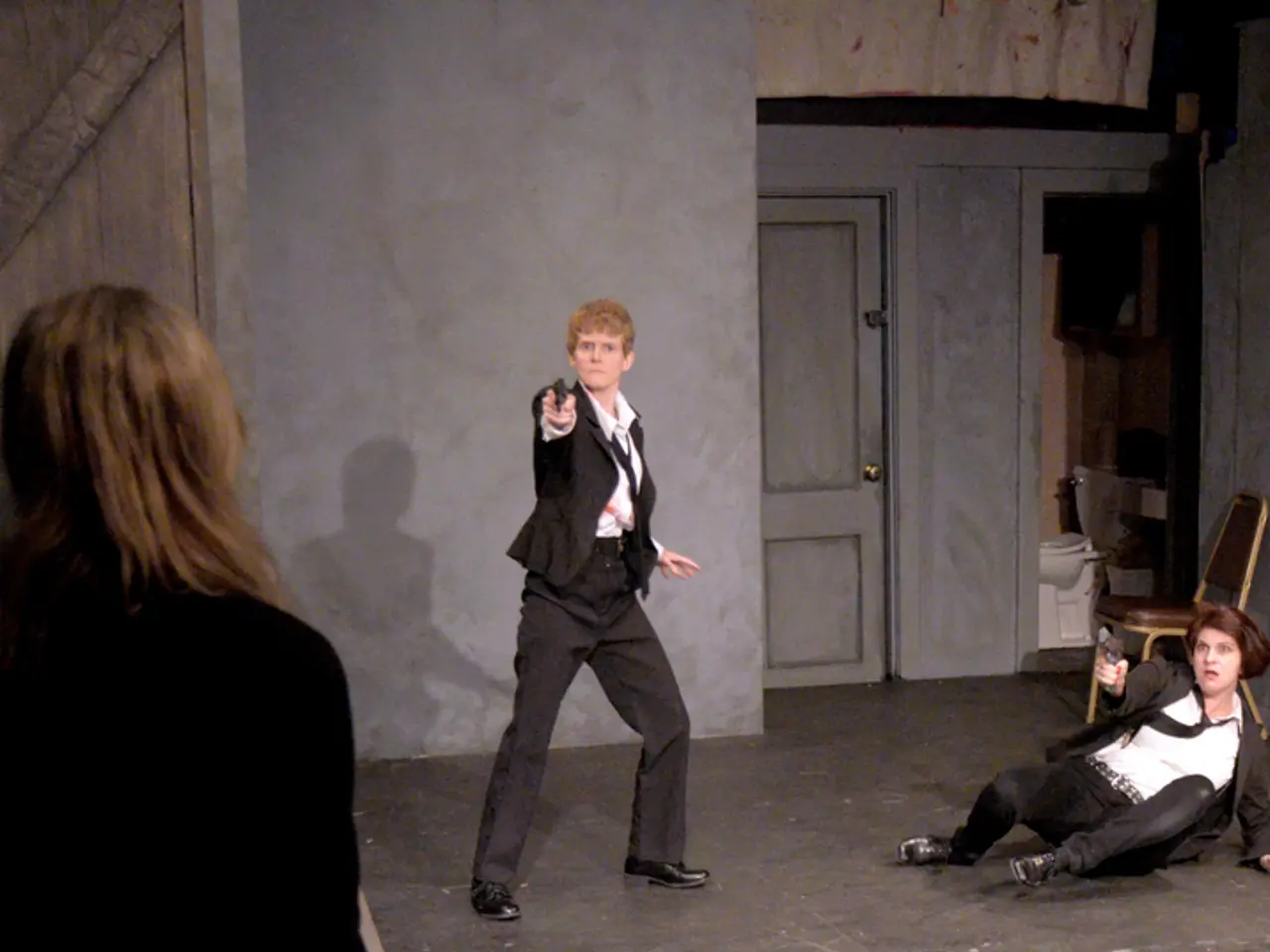Deepfakes and AI Applications in Crime Stories Unraveled
In the digital age, deepfakes have emerged as a powerful tool that can blur the lines between reality and fiction. These synthetic media creations, capable of replacing a person's likeness with someone else's using artificial intelligence, are raising serious concerns in both the literary world and the criminal justice system.
Award-winning author Daniel Kalla, who penned the thriller "The Deepest Fake," is one of the many writers exploring the implications of deepfakes in crime fiction. His website can be found at http://DanielKalla.com.
The use of deepfakes in crime fiction offers opportunities for writers and readers to challenge assumptions, heighten suspense, and question reality. Fictional possibilities range from a celebrity being blackmailed with a deepfake sex tape, to a murder suspect stumbling upon a video alibi they never created, or a journalist uncovering a network of political deepfakes destabilizing governments.
However, deepfakes also pose significant real-world implications. In the criminal justice system, they threaten the authenticity and integrity of digital evidence, undermining trust in judicial processes and complicating evidence authentication. Courts grapple with the "authentication crisis," where distinguishing genuine evidence from deepfakes becomes a challenge. There's also the "liar’s dividend," a phenomenon where genuine evidence can be falsely dismissed as fake, thereby eroding fact-finding and trust in the legal process.
To address these risks, measures such as developing specialized detection tools, updating legal rules, and actively participating in setting policies to keep pace with AI advancements are being proposed or implemented. Some jurisdictions are already providing legal remedies against deepfake misuse, such as civil injunctions and orders against unidentified perpetrators based on digital footprints.
Deepfakes have also become a tool for various criminal purposes, supporting fraud and misinformation campaigns that challenge law enforcement and judicial responses. For instance, during the early days of Russia's invasion of Ukraine, fake videos of President Zelenskyy were circulated, falsely depicting him urging his own troops to surrender.
In the era of AI, investigators will need to rely on digital forensics to uncover the truth. The cornerstone of crime fiction - physical evidence - is being challenged, as forged videos or AI-generated voice recordings can be used to frame someone. Deepfakes redefine the crime of identity theft, as your voice and face can be taken, not just credit cards or social insurance numbers.
As we navigate this new frontier, it is crucial to address the ethical and legal implications of creating a deepfake witness to bait a confession. The profound evidentiary and procedural challenges in criminal justice require technological, legal, and educational responses to safeguard the accuracy, fairness, and integrity of judicial outcomes.
References:
[1] "Deepfakes: A Literature Review," by J. H. Lee and J. Lee. IEEE Access, 2020.
[2] "Deepfakes and the Law," by D. M. S. Heyd. Oxford Journal of Legal Studies, 2020.
[3] "Deepfakes and the Law in India," by A. Mishra. Indian Journal of Law, 2021.
[4] "Deepfakes and the Erosion of Trust in User-Generated Evidence," by A. G. Johnson. Journal of Criminal Law and Criminology, 2020.
[5] "Deepfakes: A New Tool for Criminal Purposes," by A. R. Smith. Crime, Law and Social Change, 2021.
- Crime fiction authors, like Daniel Kalla, are exploring deepfakes in their work, presenting opportunities for heightened suspense and reality-questioning. (crime fiction, writers, heighten suspense, question reality)
- Deepfakes can threaten the authenticity of digital evidence in the criminal justice system, contributing to an 'authentication crisis' and complicating evidence authentication. (deepfakes, criminal justice system, authenticity, authentication crisis)
- Investigators in the digital age must rely on digital forensics to uncover the truth, as deepfakes challenge traditional physical evidence. (digital forensics, investigators, digital age, traditional physical evidence)
- Misuse of deepfakes for criminal purposes, such as fraud and misinformation campaigns, requires responses from law enforcement and judicial systems. (misuse, deepfakes, fraud, misinformation campaigns, law enforcement, judicial responses)
- To address the profound ethical and procedural challenges posed by deepfakes, efforts are being made in technology, law, and education to safeguard judicial outcomes and maintain accuracy, fairness, and integrity. (ethical and legal implications, technology, law, education, judicial outcomes, accuracy, fairness, integrity)




